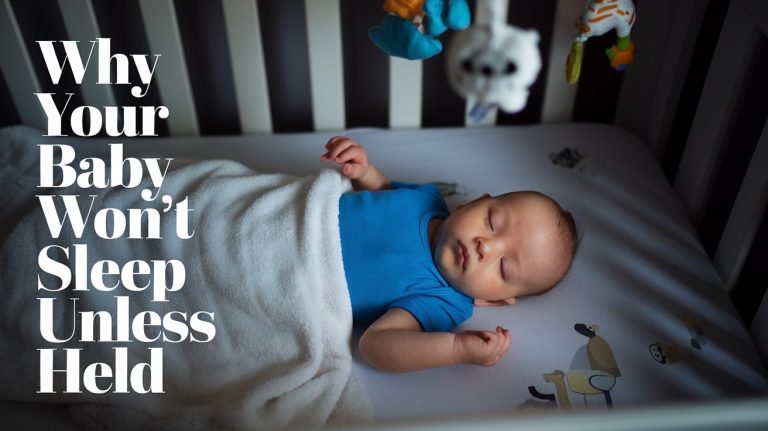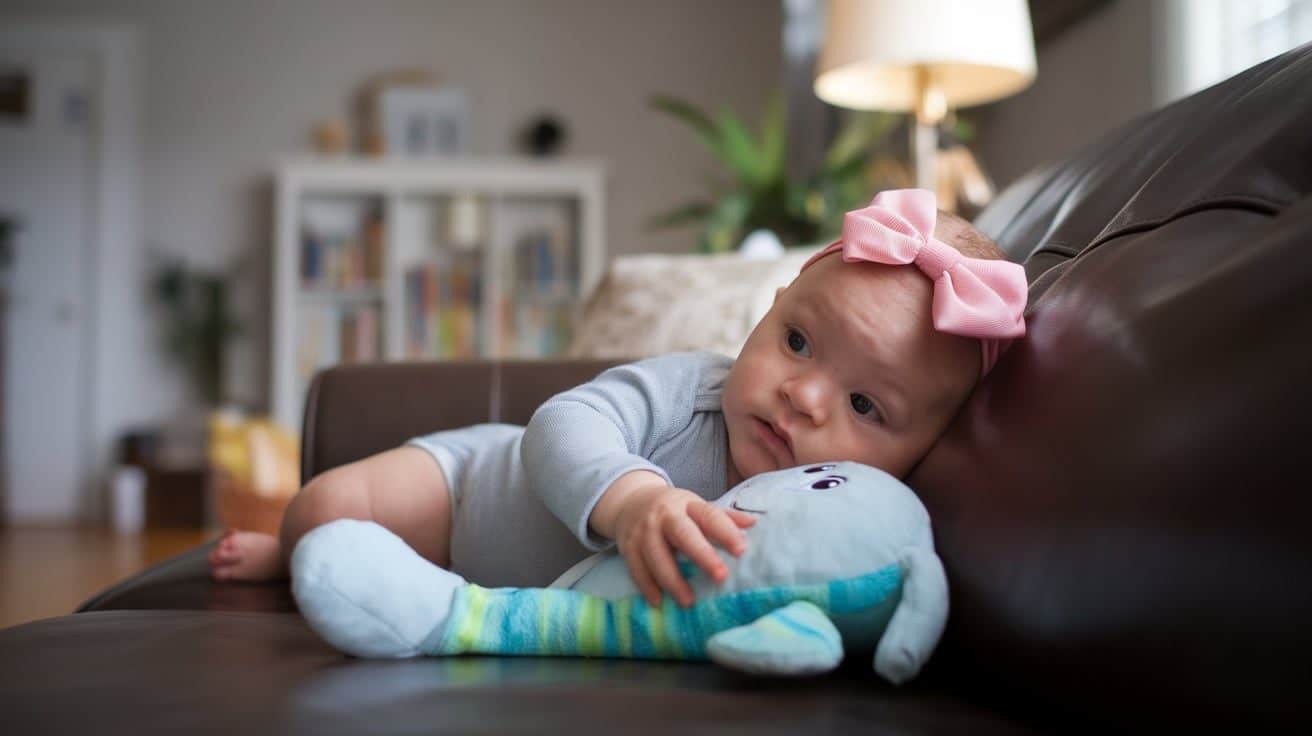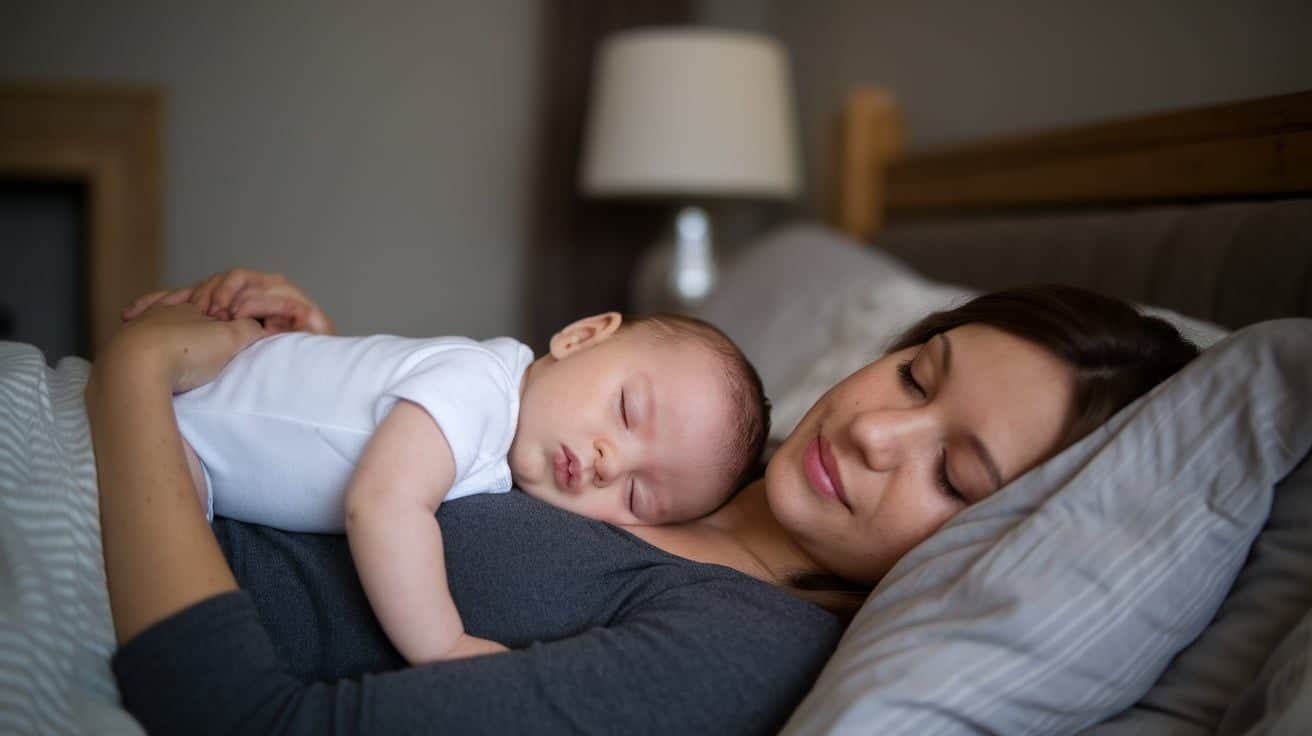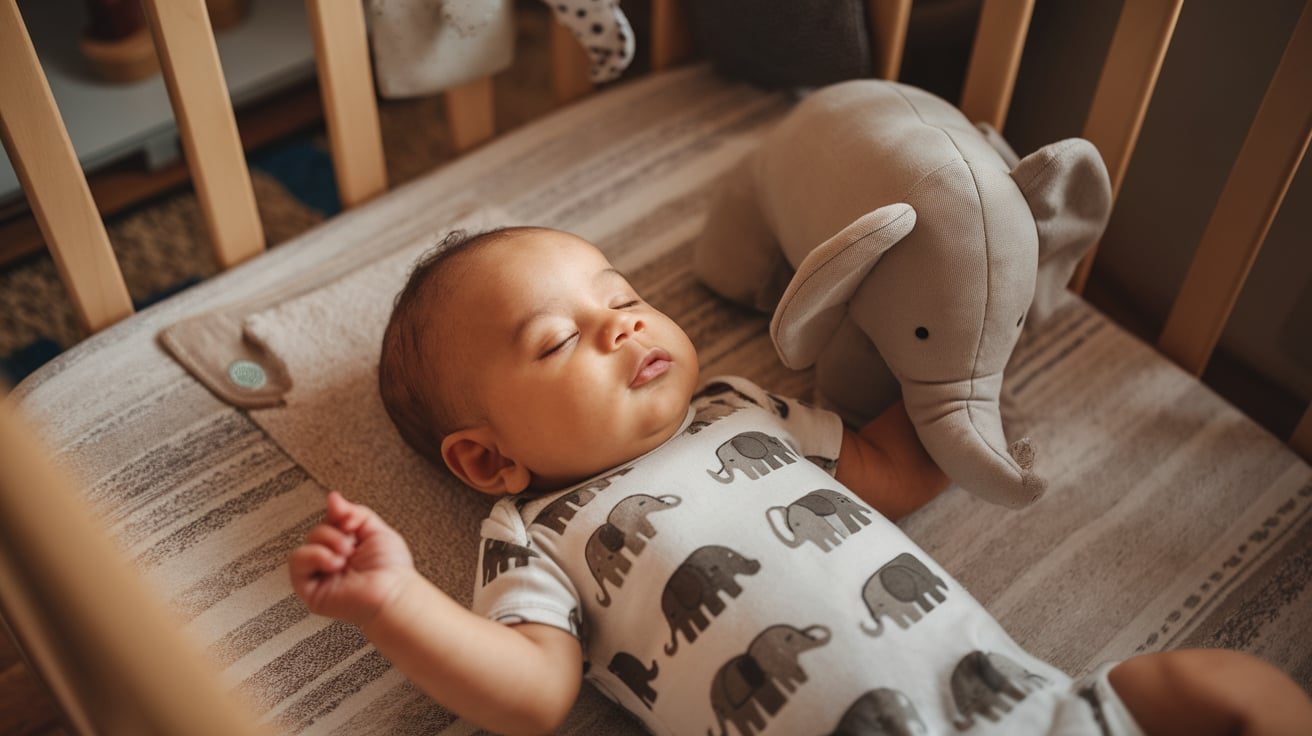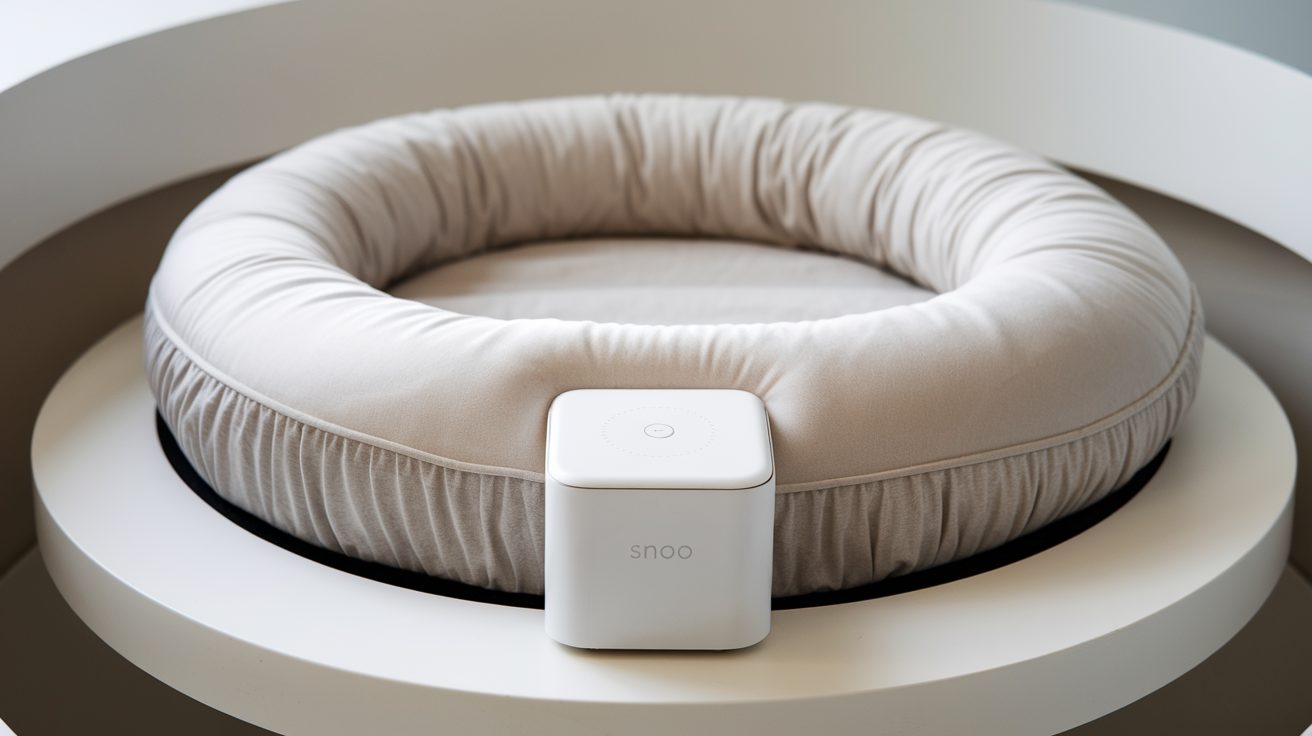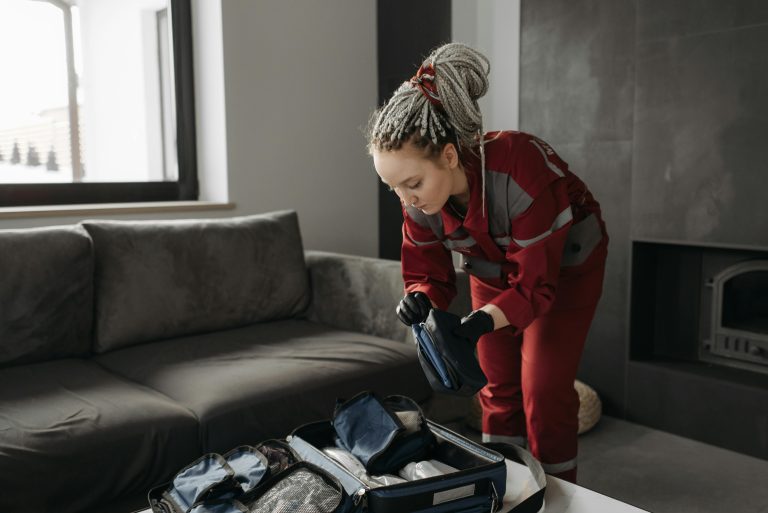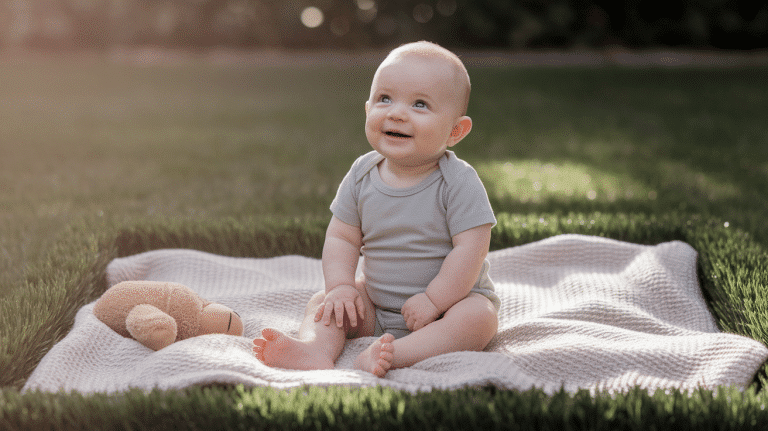If you’re a parent of a newborn, you’ve likely faced the challenge that your baby won’t sleep unless held.
While the cuddling is wonderful, it can become exhausting over time. You’re probably asking, “How can I get my baby to sleep on their own?”
Rest assured, you’re not alone. Many parents go through this, and it’s perfectly normal for newborns who need the comfort of their caregivers to feel secure.
The good news is that with patience and consistency, you can help your baby sleep independently.
This blog offers practical tips to guide you through the process and ensure both you and your baby can get the rest you deserve.
Why Babies Sleep Only When Held
Let’s be honest—babies sleep better when they’re in your arms. And it’s not just because it’s cute (though, let’s admit, it totally is).
It’s because they really need you. Here’s why:
1. Attachment and Bonding
First off, babies are hardwired to want to be close to their caregivers. They feel safe and secure when they’re held. This is super important for their emotional development.
So, if your baby seems to need you to hold them to sleep, it’s because they trust you. And that’s a good thing! You’re building that bond.
2. Temperature and Breathing Regulation
Babies can’t regulate their body temperature the way adults can. When you hold them, your warmth helps keep them cozy. They also rely on your steady breathing to calm themselves down.
It’s no surprise they sleep better in your arms—it’s like having their own personal comfort zone.
3. Learned Behaviour from the Womb
For nine months, your baby was in a snug, warm place, hearing the gentle rhythm of your heartbeat and feeling you move around.
No wonder they love being close to you! They’ve learned that your presence means safety and sleep.
So, when you try to lay them down in their crib, they’re probably thinking, “Wait, where did my warm, cozy comfort go?”
4. The Startle Reflex
And then there’s the Moro reflex—basically, your baby’s startle response. It makes them jerk awake whenever they feel like they’re falling.
When you hold them, that reflex doesn’t get triggered, and they can stay asleep.
But as soon as they feel the sensation of falling into the crib, their reflex kicks in, and boom, they’re wide awake.
Is It Safe for My Baby to Sleep on Me?
Although it’s tempting to let your baby sleep on you because it feels safe and cozy, there are some risks involved.
Sleeping on a soft surface like an armchair or bed can be dangerous due to the risk of suffocation or sudden infant death syndrome (SIDS).
The American Academy of Pediatrics advises against bed-sharing for this reason.
If you fall asleep too, your baby could slip into a dangerous position or get trapped between your body and furniture.
Instead, place your baby on their back in a crib with a firm mattress, keeping the sleep area free of blankets, pillows, and toys.
Tips to Get Your Baby to Sleep Without Being Held
Here are 11 practical tips for it:
- Set Age-Appropriate Expectations: Newborns need help to fall asleep until 4-6 months. Be patient and understand this phase is temporary.
- Try Swaddling: Swaddle safely to mimic the womb’s snug feeling and reduce the startle reflex. Avoid tightness around the hips.
- Spend Extra Time Snuggling: Cuddle your baby until drowsy before placing them in their crib to provide security and reassurance.
- Introduce the Sleep Space During Awake Times: Let your baby play or relax in the crib when not tired, helping them associate it with comfort.
- Give Your Baby Opportunities to Self-Soothe: Place your baby in the crib while drowsy but not fully asleep to encourage self-soothing. Be patient if they don’t succeed immediately.
- Start with One Crib Nap Per Day: Begin with one crib nap daily, even if it’s short, to help your baby adjust to sleeping independently.
- Gradual Weaning from Holding: Slowly reduce physical contact by offering gentle touches instead of picking your baby up every time they fuss, helping them learn to fall asleep without being held.
- Don’t Rush the Process: Be patient during the transition. Crying is normal, and consistency is key as your baby learns to self-soothe, which may take days or weeks.
- Make Sure the Environment is Comfortable: Ensure the room is the right temperature—between 68-72°F is ideal. A cool room with soft, breathable clothing will keep your baby comfortable throughout the night.
- Use White Noise: A white noise machine can help mimic the sounds your baby heard while in the womb, creating a soothing environment that encourages sleep.
- Avoid Feeding to Sleep: Feeding your baby to sleep can create a sleep association that may be hard to break.
Snoo: An Alternative to Make Your Baby Sleep Without You
If you’re struggling with your baby only sleeping when held, the Snoo Smart Sleeper might offer the solution you’ve been searching for.
This high-tech bassinet is designed to help your baby sleep independently without the need for constant holding.
The Snoo mimics the comforting motions and sounds your baby experienced in the womb, offering gentle rocking and soothing white noise.
This helps your baby settle into a deep sleep while still feeling secure in their sleep space.
With features like automatic motion adjustment based on your baby’s crying, it takes some of the guesswork out of soothing, allowing your baby to self-soothe more easily.
It’s an ideal alternative if you’re looking to reduce the need for constant holding but still want your baby to feel secure during sleep.
Conclusion
Remember, your baby wanting to be held to sleep is completely natural.
They’re adjusting to life outside the womb and need your comfort to feel safe. While this phase can feel tiring, it won’t last forever.
Start with small changes – try one crib nap daily, use swaddling, or create a cozy sleep space with white noise.
Be patient with yourself and your little one during this process. Some days will be harder than others, and that’s okay.
If you’re feeling worn out, reach out to other parents or your pediatrician for support. You’re doing a great job, and with time and consistency, your baby will learn to sleep independently.
Ready to start? Pick one tip from our guide and try it today during your baby’s next nap.
Frequently Asked Questions
How to Help My Baby Adjust to A Crib?
Gradually introduce your baby to their crib by starting with short naps and making the crib a familiar space for them.
When Should I Stop Holding My Baby to Sleep?
You don’t have to rush. Around 3-4 months, your baby may start being more ready to sleep independently, but every baby is different.
How to Handle Overnight Wakings?
Allow your baby some time to self-soothe when they wake during the night. Give them a few minutes before picking them up, and they may fall back asleep on their own.

